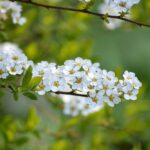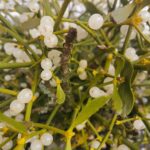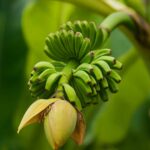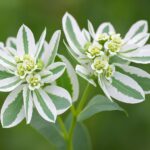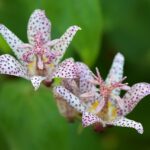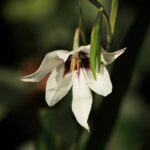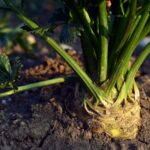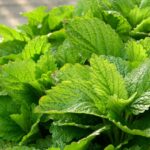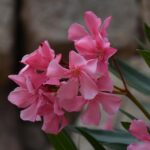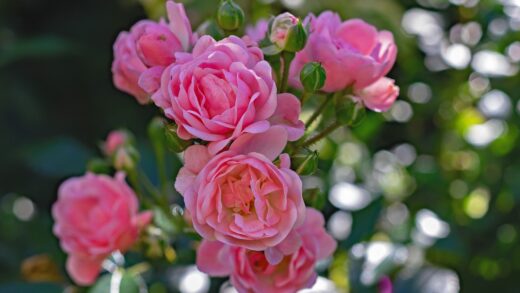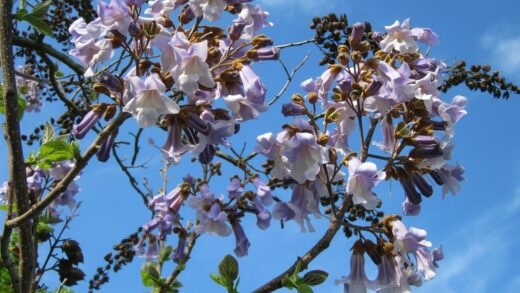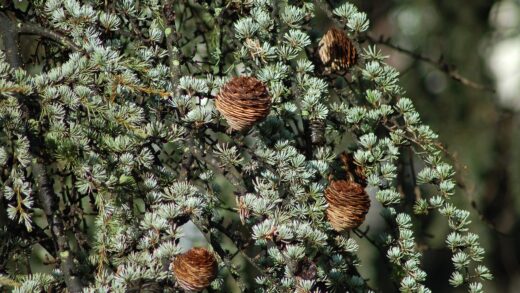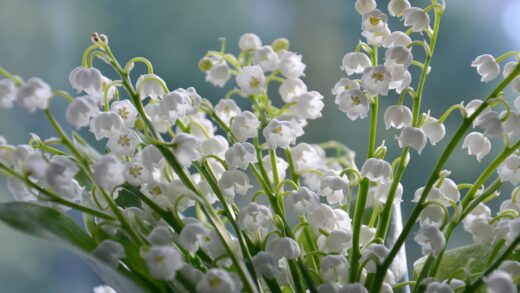Lemon balm, scientifically known as Melissa officinalis, is a very popular perennial herb emitting a pleasant lemon scent, which has been cultivated for centuries for medicinal, culinary, and industrial purposes alike. However, for the plant to develop optimally, produce lush foliage, and have the highest possible essential oil content, providing professional nutrient replenishment is essential. Developing the right fertilization strategy fundamentally determines not only the quantity of the yield but also its quality, so every grower must pay special attention to this work process. Improperly chosen or excessive nutrient application can not only cause economic damage but can also negatively affect the plant’s health and even degrade the soil structure in the long run.
One of the keys to success in lemon balm cultivation is a harmonious nutrient supply that considers both the plant’s phenological phases and the soil conditions. Before starting cultivation, it is worth having a soil analysis done to get a clear picture of the soil’s nutrient-supplying capacity, pH value, and humus content. This analysis provides the basis for creating a precise nutrient management plan, preventing unnecessary and potentially harmful fertilization. Lemon balm prefers loose, well-drained, nutrient-rich soils, but with proper care, it can be successfully grown in less favorable areas as well. It is important to note that the nutrient requirement is not constant; it changes in parallel with the plant’s development cycle, with the most intensive nutrient uptake observed during vegetative growth and the period before flowering.
In cultivation practice, nutrient replenishment for lemon balm is most effectively achieved with a combination of organic and mineral fertilizers. Organic fertilizers, such as well-rotted manure or compost, not only provide the necessary nutrients but also improve the soil’s structure, water-holding capacity, and microbiological activity. During base fertilization, before planting, it is advisable to incorporate a larger dose of organic matter into the soil, which will provide nutrients to the plant continuously over the long term. In contrast, mineral fertilizers contain macro- and micronutrients in a more readily available form, so they are primarily used for top dressing during the growing season for targeted and rapid intervention.
For successful cultivation, a balanced nutrient supply is essential, which includes providing macro-, meso-, and micronutrients in the right proportions. Excessive nitrogen supply, for example, although it can result in spectacular, lush foliage, may reduce the plant’s essential oil content and make it more susceptible to diseases. In contrast, a deficiency of phosphorus and potassium can be detrimental to root development and flower formation. Therefore, a proper fertilization program must always be individual, tailored to local conditions, and based on a plan that fully considers the plant’s needs to achieve an abundant and high-quality yield. Modern cultivation technologies, such as fertigation combined with drip irrigation, allow for extremely precise and efficient nutrient application, minimizing environmental impact.
Main nutrient requirements of lemon balm
For the development of lemon balm and to achieve a high essential oil content, the presence of the three main macronutrients, nitrogen (N), phosphorus (P), and potassium (K), in the right proportion and quantity is essential. Nitrogen plays a fundamental role in the growth of vegetative parts, especially the leaves and shoots, which provide the drug. The greatest need for nitrogen is at the beginning of the growing season, during the intensive growth phase, which contributes to the development of lush, green foliage. However, moderation is important, as excessive nitrogen application can result in a loose tissue structure, increased susceptibility to diseases, and a lower essential oil concentration. Therefore, it is advisable to divide nitrogen replenishment into several smaller doses during the growing season.
More articles on this topic
Phosphorus primarily plays a key role in energy metabolism processes, root formation, and flower and fruit production. A strong, deep-penetrating root system is essential for proper water and nutrient uptake, which forms the basis for the entire plant’s stability and stress tolerance. Phosphorus deficiency can manifest in poor root development, stunted growth, and a reddish-purple discoloration of the leaves. As phosphorus is a less mobile element in the soil, it is best applied as a base fertilizer into the root zone before planting, so that it is available to the plant from the beginning.
Potassium plays an indispensable role in regulating the plant’s water management and in increasing its resistance to diseases and environmental stress (such as drought and frost). In addition, potassium promotes the transport of sugars and other assimilates within the plant, which indirectly contributes to improving quality parameters, including the essential oil content. An adequate potassium supply results in a firmer tissue structure, better winter hardiness, and a more intense aroma. In case of potassium deficiency, the edges of the leaves begin to yellow, then turn brown and dry out, and the plant becomes limp and flaccid.
In addition to macronutrients, the importance of meso- and micronutrients should not be forgotten, which, although required in smaller quantities, their deficiency can cause serious physiological disorders. Magnesium (Mg) is the central atom of chlorophyll and is therefore essential for photosynthesis; its deficiency causes interveinal yellowing of the leaves. Calcium (Ca) is responsible for the stability of cell walls, and sulfur (S) is a component of many amino acids and enzymes. Among the micronutrients, iron (Fe), manganese (Mn), zinc (Zn), and boron (B) play a prominent role in various enzymatic processes, and their deficiency can trigger specific symptoms, such as chlorosis or growth abnormalities.
The practice of base and top dressing fertilization
The purpose of base fertilization is to provide the soil with the necessary basic nutrients for the long term before planting lemon balm, thereby creating the conditions for stable and balanced development. This operation is best performed in conjunction with autumn deep plowing or spring pre-planting soil preparation. The backbone of base fertilization is well-rotted organic manure, such as farmyard manure or high-quality compost, which is recommended to be incorporated into the soil at a rate of 30-40 t/ha. Organic matter not only serves as a slow-release nutrient source but also improves the soil’s structure, aeration, and water management, which is particularly important for the deep-penetrating root system of lemon balm. This organic manure application should be supplemented with phosphorus- and potassium-rich mineral fertilizers to ensure initial root development and subsequent stress tolerance.
More articles on this topic
Top dressing is the targeted nutrient replenishment during the growing season to meet the plant’s current needs according to its phenological phase. In the case of lemon balm, the greatest need for readily available nutrients is after the first cut, so that the plant can regenerate and develop new, strong shoots for the next harvest. During this period, nitrogen-dominant top dressing is primarily recommended. It is advisable to apply nitrogen in several smaller, split applications, for example, after cutting and during periods of more intensive growth. This prevents nutrient leaching and a sudden, excessive nitrogen load on the plant.
The form of top dressing can be the application of solid mineral fertilizer or fertigation combined with modern irrigation systems. Solid fertilizer is most effective when spread between the rows and then lightly incorporated into the soil, or applied before rain or irrigation. The advantage of fertigation is that the nutrients, along with water, reach the root zone directly in a dissolved form, so the plant can use them immediately. This method is extremely precise and efficient, allowing for a quick adjustment of the nutrient composition to the plant’s needs while minimizing environmental impact. During top dressing, in addition to macronutrients, attention must be paid to replenishing micronutrients, especially if deficiency symptoms appear, even in the form of foliar fertilizer.
It is important to emphasize that the fertilization strategy should always be based on soil analysis results and the visual condition of the plant. The color, size of the leaves, and the intensity of growth reveal a lot about the nutrient supply of lemon balm. Over-fertilization can be at least as harmful as nutrient deficiency; it can lead to soil salinization, environmental pollution, and plant burn. A professional, harmonious nutrient management tailored to the plant’s needs is the key to economical and sustainable lemon balm cultivation, which results in an abundant, high-quality yield with a high active ingredient content.
Organic fertilization and the role of soil life
The use of organic fertilizers in lemon balm cultivation goes far beyond mere nutrient replenishment; it plays a fundamental role in the long-term maintenance of soil health and fertility. Incorporating well-rotted manure, compost, green manure, or other organic materials into the soil improves its physical structure. Humic substances act as a glue, binding soil particles into stable aggregates, which increases soil porosity, aeration, and facilitates root growth. This crumbly structure also significantly improves the soil’s water management, reducing susceptibility to drought and preventing waterlogging.
Organic materials are the engines of soil life, serving as food for beneficial microorganisms, fungi, and earthworms living in the soil. This rich and active soil biology is essential for nutrient cycling. Microorganisms break down complex organic compounds and transform them into simpler inorganic forms that are easily available to plants. This process, called mineralization, ensures a continuous, slow release of nutrients, which prevents sudden fluctuations in concentration and nutrient leaching. The activity of soil life thus forms a kind of living buffer between the plant and the nutrient sources.
In the cultivation of lemon balm, organic fertilization is particularly important as it contributes to increasing the plant’s natural resistance. In a healthy, biologically active soil, microorganisms that can suppress the proliferation of pathogenic fungi and bacteria multiply, thereby reducing the need for plant protection interventions. Furthermore, humic and fulvic acids from organic matter, through their chelating properties, help the uptake of micronutrients, thus preventing deficiency symptoms even in more calcareous, high-pH soils. The harmonious nutrient supply and stress-free environment directly contribute to a higher essential oil content.
When implementing organic fertilization practices, proper timing and quality are important. The manure used for base fertilization must always be well-rotted and composted to avoid introducing weed seeds and the risk of burning. The use of green manure, i.e., plants sown specifically for soil improvement and then incorporated into the soil before flowering (e.g., mustard, oil radish, legumes), is also an excellent method for increasing the soil’s organic matter content and improving soil structure. In sustainable farming, organic fertilization is not an option but the foundation of the system, which ensures the preservation of soil fertility for future generations.
The relationship between fertilization and essential oil quality
The primary goal of lemon balm cultivation is often the extraction of high-quality essential oil with a characteristic citral (geranial and neral) content, the quantity and quality composition of which is significantly influenced by fertilization practices. There is a complex, often seemingly contradictory relationship between nutrient supply and essential oil production. While an abundant nutrient supply, especially nitrogen, spectacularly increases the vegetative mass, i.e., the leaf yield, it can have a negative effect on the synthesis of secondary metabolites, such as essential oils. Excessive nitrogen availability pushes the plant towards primary metabolism, growth, at the expense of compounds that serve secondary, defensive, and attractant functions.
A balanced nutrient supply is crucial for quality essential oil production. Adequate levels of phosphorus and potassium are essential for the energy supply and regulation of complex biosynthetic processes. Potassium, for example, by enhancing stress tolerance, indirectly stimulates the metabolic pathways that lead to the production of essential oil components. A mild stress situation for the plant, resulting from a not-too-intensive nutrient supply, often results in a higher concentration of essential oil in the foliage. Therefore, the goal is not to achieve maximum leaf yield at all costs, but to find the optimal balance between yield and quality.
The role of micronutrients is also prominent in essential oil synthesis, as they act as cofactors for many enzymes that catalyze the process. A deficiency of manganese, zinc, and boron, for example, can inhibit the enzymatic steps necessary for the formation of terpene-based compounds, including the precursors of citral. As a result, not only may the quantity of essential oil decrease, but its composition may also change, which reduces the market value of the drug. Foliar fertilization can be an effective method for quickly and targetedly correcting micronutrient deficiencies, especially during critical development stages.
Therefore, in cultivation practice, the most favorable result is achieved by a strategy that focuses on increasing the soil’s organic matter content and ensuring a stable supply of phosphorus and potassium during base fertilization. Top dressing during the growing season, especially the application of nitrogen, should be done sparingly, adjusted to the plant’s condition, avoiding effects that stimulate excessive vegetative growth. Methods used in organic farming, such as the use of compost teas and plant decoctions, can also be beneficial, as they make nutrients available more slowly, in harmony with soil life, while also stimulating the plant with biologically active substances. Professional, quality-oriented fertilization is therefore an essential condition for producing marketable lemon balm with a high active ingredient content.


